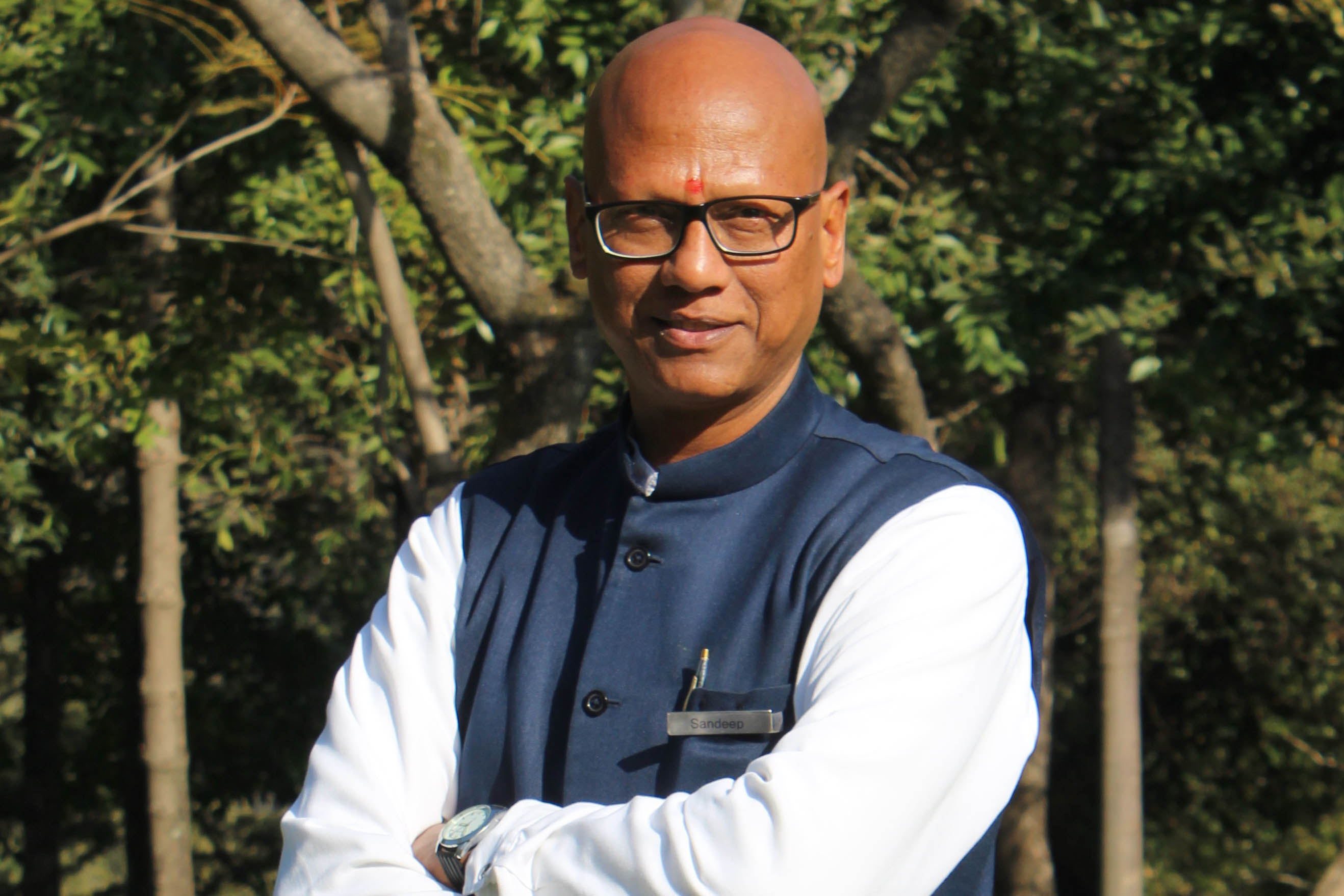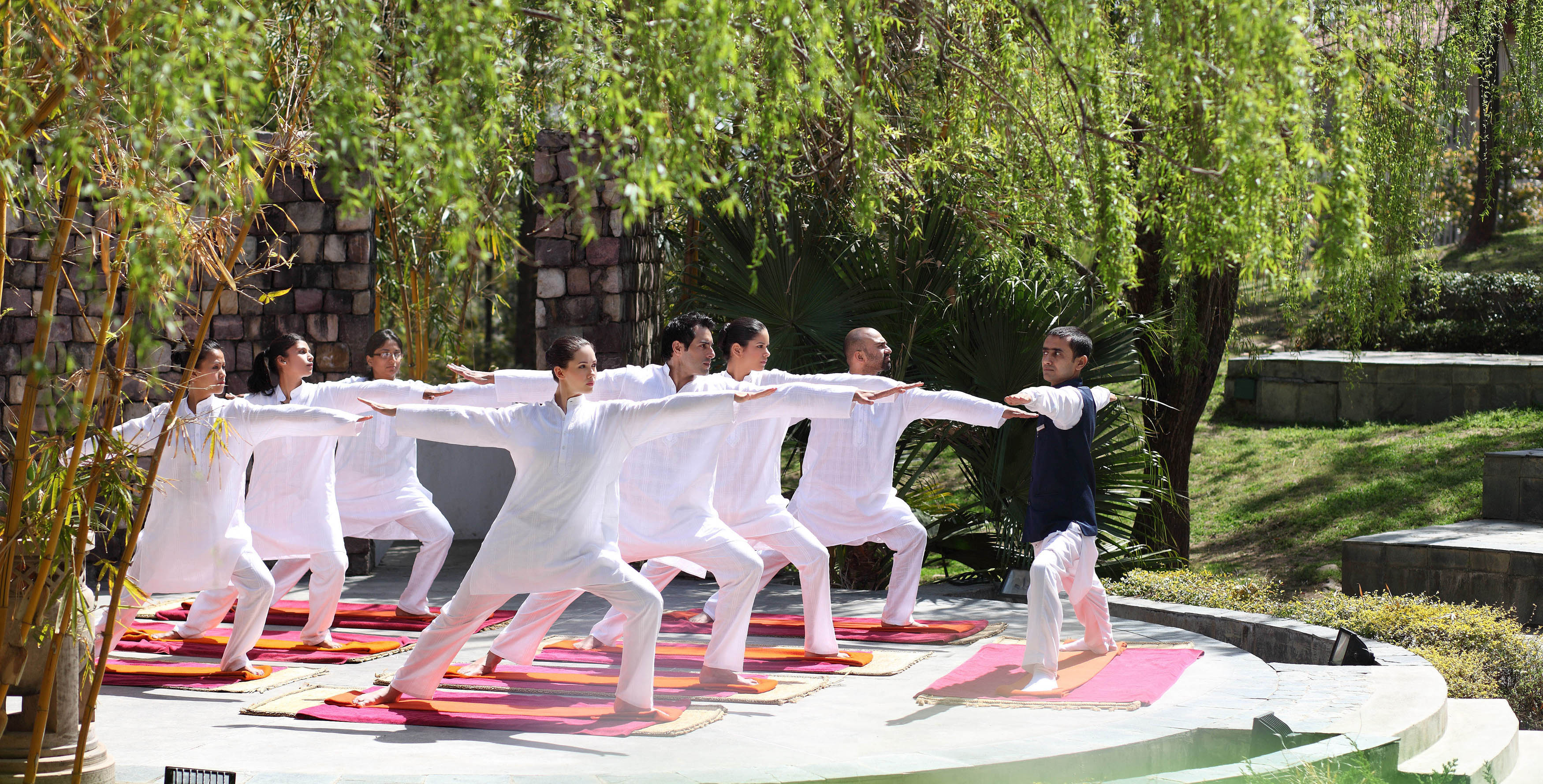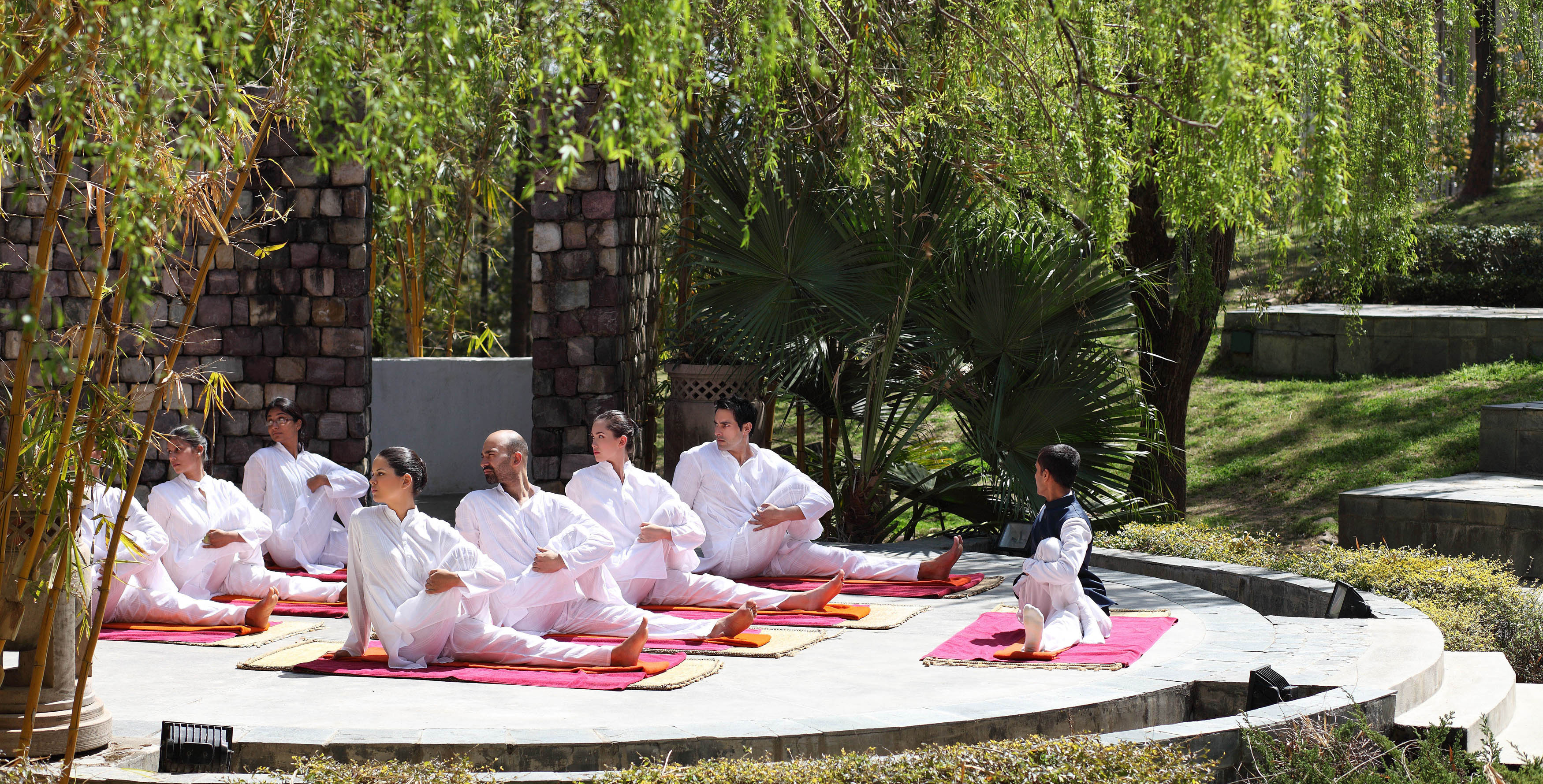How to Use Yoga to Reduce your Stress

Shining the spotlight on the power of yoga to tackle stress, Mr. Sandeep Agarwalla, head of yoga in Ananda in the Himalayas, India, shares the benefits of taking up the practice of yoga.
Shining the spotlight on the power of yoga to tackle stress, Mr. Sandeep Agarwalla, head of yoga in Ananda in the Himalayas, India, shares the benefits of taking up the practice of yoga.
Yoga is a method through which we can integrate the faculties of Body, Mind and Spirit. In today’s tension ridden society, yoga is the ideal tool to steadily process the stress we experience and ensure that we remain balanced. Without this “digestive process” of tension, our daily stresses latch onto the body, mind and spirit causing imbalances in our behavior, thought processes, psychological structure and emotions. In most of us, this symbiosis of stress is so far gone that our true nature is almost completely hidden.
The Causes of Stress
As humans, we are invariably ruled by the world of sensory stimuli – that which we see, feel, hear, smell and taste. Of course, this can be beneficial; however, too much attachment to the sensory stimuli often results in physical, mental and emotional stress. These stresses then come to cloud our view leaving us unable to see the full picture or act appropriately when needed.
Within yogic philosophy, this battle is understood by the concepts of raga and dwesha (attraction and repulsion). When things are good, we have attraction towards the root stimuli of our stresses, but when things are bad we are suddenly repulsed by them. What this teaches us, is that if we swing between these two poles, we will experience craving, conflict, unhappiness and suffering. Over time, this can then manifest through physical disease, mental imbalance and spiritual dissatisfaction.
To overcome this situation, we must develop an awareness of the oscillations of the mind and find a balance so that we are not affected too heavily by these daily troubles. This is when engaging in a yoga practice becomes helpful. Yoga becomes a tool to treat both the causes and symptoms of the situation we have found ourselves in.
Ananda in the Himalayas' Head of Yoga Sandeep Agarwalla shares his thoughts about how yoga can be used to combat stress
The Physical Side of Yoga
Both our day to day physical activities and our accumulation of general stress can manifest as physical tension within the body – often in the form of stiffness and joint trouble, but also as more serious back pain, digestive disorders or lack of blood circulation. To deal with these physical complications, different yoga positions (asana’s) can be used to help eliminate this tension from the muscles, joints and the organs. More than just getting the body active, when these positions are done in unison with correct movement (vinyasa) and breathing (pranayama), one can cultivate a new equilibrium within the body.
Relieve physical aches with yoga in Ananda in the Himalayas
The Mental Side of Yoga
When the accumulation of stress begins to affect our mind, it can be increasingly important to focus on the practice of pranayama. Through following a series of breathing techniques, we can quite easily manifest a sense of relaxation and concentration that soothes the stress away. Indeed, simple, slow, deep breathing has far greater reaching effects than any of the overindulgent habits we often presume will help us. Whilst we do many things to distract ourselves from the mental stresses of daily life these are frequently not the right ways to de-stress. These are just ways of distraction, not resolution. They are the kind of distractions that ease the stress enough to allow for sleep, but don’t rejuvenate us enough to feel refreshed when we wake up.
Through the practice of yoga, we begin the process of awareness and concentration (Pratyahara and Dhaarana). This practice helps illuminate how the mind is too frequently disturbed by an influx of different thoughts yet we are not even aware of why they occur. The more we continue with this practice, the more the faculties of body and mind are brought together. This leads to greater relaxation and concentration and we can train the mind to become objectively aware of our surroundings and interactions. With regular practice, we can control the negative trains of thoughts, anger, anxieties, frustrations and more.
Yoga is not just limited to physical practice, and the many branches of yoga help to highlight the different weightings given to the various aspects of the practice. For example, Karma Yoga concerns action without expectation; Mantra Yoga focuses on the chanting of a mantra or sound; Bhakti Yoga channels our energy toward a higher direction; and Kriya Yoga delves into intricate meditation techniques. Considering this, the basic aim of the yogic approach towards stress is therefore not to deal with the symptoms but rather to eliminate the root cause of the problems.
Incorporate exercise into your daily routine at Ananda in the Himalayas
This is a guest blog post by Mr. Sandeep Agarwalla, head of yoga at Ananda in the Himalayas in India. If you would like to book a holiday at Ananda in the Himalayas, enquire online here, talk to one of our Travel Specialists on 0203 397 8891 or email us on This email address is being protected from spambots. You need JavaScript enabled to view it.






